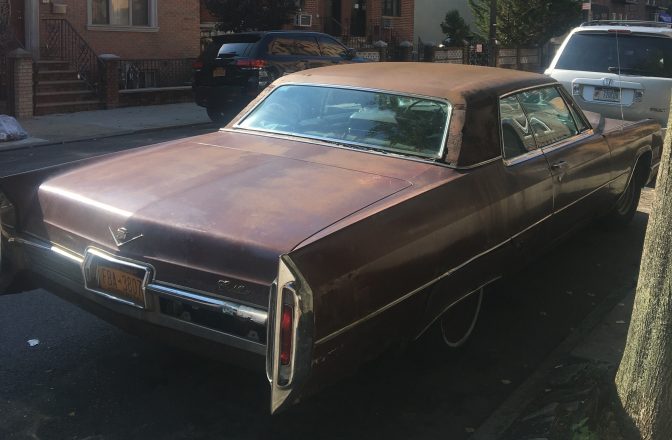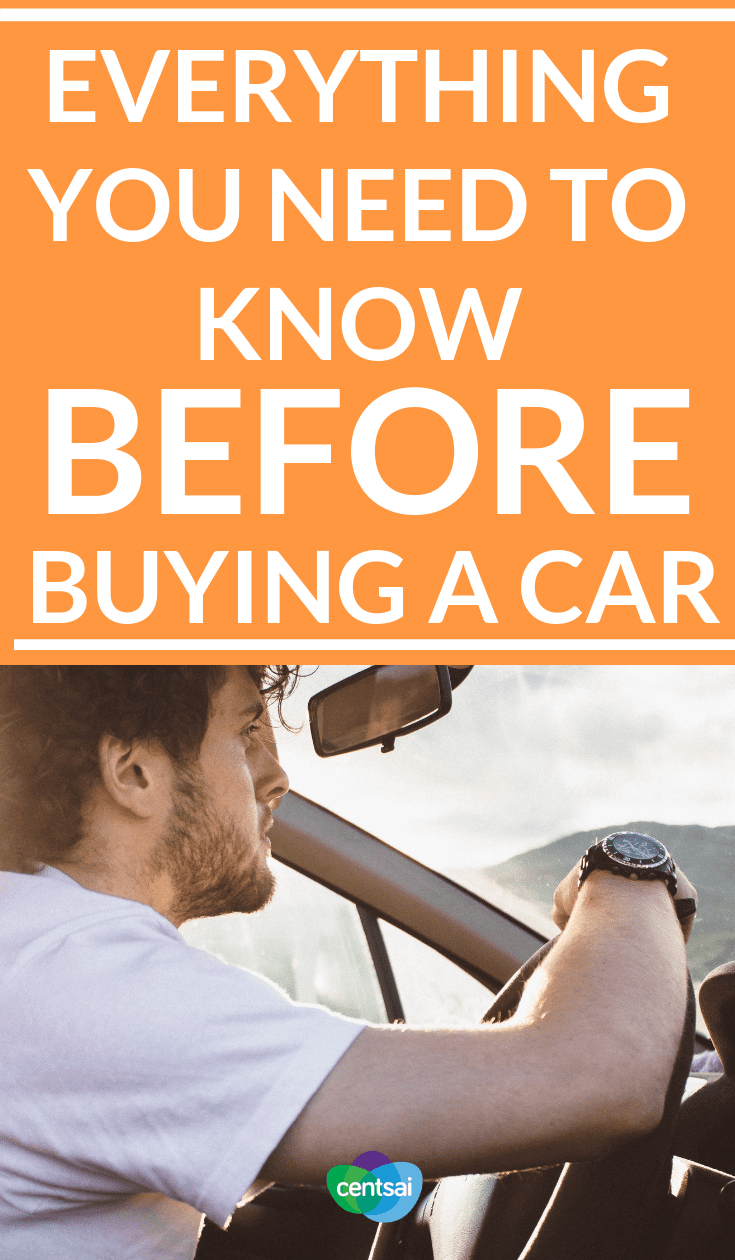
Emma Finnerty
Last year was a record year for car loans. Overall, buyers’ credit scores were higher than ever before. Yet there’s a bit of a trouble spot. Currently, 7 million consumers are 90 days or more late on their car payments, according to the Federal Reserve Bank of New York. That’s a big ouch.
The defaults are a record in terms of numbers, but not a record as a rate. In other words, while there are a lot of defaults, relatively speaking, that number isn’t as bad as it has been in the past.
Auto loan defaults are most prevalent amongst the least creditworthy consumers — the sub-prime borrowers. But while this group has the most trouble paying their auto loans (to no one’s surprise), nearly everyone is at risk of paying more than necessary when purchasing and financing an automobile.
Understanding the process and being properly prepared can help you obtain the best possible deal. And it will reduce your stress, to boot!
Breaking Down New Car Prices
It’s an information world, and there’s a plethora of information available to the car-buying public. There’s no excuse for walking into a dealership unprepared.
Cars are listed at their manufacturer’s suggested retail price (MSRP). This is a fixed number and should be listed on the car’s Monroney sticker, commonly known as a window sticker. What’s not on that sticker, but is readily available, is the dealer invoice cost for the vehicle.
 This information is crucial in determining a fair price for a new vehicle. You can use any of a number of web resources to find this number.
This information is crucial in determining a fair price for a new vehicle. You can use any of a number of web resources to find this number.
The dealer actually pays less than this in most cases. Most, but not all, manufacturers offer dealers a “holdback” — typically three percent of the dealer invoice amount. Dealers may also have cash incentives and volume incentives that can further lower their cost and increase their profit.
If a dealer sells you the car for the amount of its invoice, it’s still making a small, or even mid-size, profit.
You might have a manufacturer’s rebate, as well. Manufacturers typically offer rebates to move inventory. While this can happen throughout the year, it’s most commonly used to move inventory to make way for a new model year. Manufacturer's rebates consist of money that the manufacturer offers to incentivize you to purchase a vehicle. Since the dealer doesn’t contribute to these rebates, it should still give you an appropriate discount on top of that.
Auto Financing
Overpaying for a car is often less detrimental than overpaying for its financing. And dealers cause many people to overpay for financing. It’s typically a major part of how they make money on car sales. Understanding how dealers make money is essential to combating their treachery.
Dealerships often try to arrange the financing for you. This can be through manufacturer financing or through banks or other lending institutions. Nearly every time the dealership arranges the financing, they’re paid to do so. Even on a lease, which is a form of manufacturer financing.
How Dealerships Get Paid for Loans
The dealership can be paid a specific flat fee for the loan, or they can be paid a commission for marking up a car loan. This is where the big money comes in. And the consumer rarely has any idea they’ve been had.
Dealerships are paid a flat fee for placing a loan, including leases, at the lending institution’s best rate. They typically make $150 or more on a flat fee.
When dealers shop rates for you, banks respond to the dealership with a “buy” rate — the rate at which they will buy the loan. If a dealership places the financing using the buy rate, it's generally paid a flat fee to do so.
But it doesn't have to present or disclose the buy rate. For example, let’s say that the best rate to come back is 2.9 percent. Anything the dealership presents to you over 2.9 percent will result in a profit for the dealership.
How Dealerships Present Rates to Customers
The rate the dealership presents is the “sell” rate. Most lending institutions cap the sell rate at two percent over the buy rate, although there are exceptions.
In our example, this means the dealership could offer you a rate of 4.9 percent without ever disclosing that it’s marking that number up.
The dealer can earn thousands of dollars on an auto loan marked up at two percent more than the buy rate, and you’re paying thousands of dollars more in payments to subsidize the dealer’s profit.
Remember, the bank in our example would have been willing to loan you the money at 2.9 percent and pay the dealership a small flat for placing the financing. The amount the dealer makes depends on the size and length of the loan and how much they mark it up.
They can effectively do the same thing with a lease. They’re simply presenting a higher payment than necessary, rewarding the financing company (generally the manufacturer) with a bonus that it shares with the dealership.
When it comes to financing, it’s a rare dealership that’s not looking to screw you over. This is a huge part of how the dealers make money.
Illegal Shady Stuff
You would think we wouldn’t need to talk about illegal shady stuff in the information age, but we do. And the No. 1 illegal, shady trick is packing payment.
What Is Packing Payment?
This practice involves intentionally presenting you, the buyer, with a padded payment number in order to use this amount to sell you other services or to increase the price.
Here’s how it works: Early in the process, dealerships may present a range of payments based on interest rates. But once you’ve agreed on a purchase price of the car and they’ve submitted your information to the bank, some dealers look to take advantage.
Let’s say, for example, based on the agreed-upon purchase price and term, as well as the bank’s approved interest rate, your payment comes to $424.75 per month. The dealership shows you the numbers, everything is correct, but the representative tells you that the payment is $449.75 per month.
The dealership has packed $25 into your payment, which it will try to get you to spend unknowingly.
It may try to use it for add-ons, such as telling you that you can add an extended warranty for only a couple dollars per month when really it’s $25 plus a couple of dollars. If the dealership doesn’t get you to bite on a high-profit add-on, it may actually alter the price it’s giving you for the car to try to reap the profit of their overstated payment number.
Check the Numbers!
Note that this practice is illegal in all 50 states, but the practice continues today. You should be prepared to check the numbers the dealership presents to you.
To give you an idea of the prevalence of the problem, some dealership software systems allow for the dealership to add a fixed dollar amount onto a payment when putting together the proposal. The software manufacturers wouldn’t do it if the dealerships didn’t demand it. It’s illegal, but it still happens.
The After-Sales
The process in most dealerships is that after you’ve agreed to the purchase price of the vehicle, you meet with a finance and insurance specialist — the “F&I guy.”
The F&I person's job is to make additional money for the dealership. The primary way to do this is through financing, which we’ve discussed above. Then there are aftermarket products.
The F&I person’s job is to sell you rustproofing, paint protection, fabric protection, and window etching. And maybe a replacement for your car insurance. You should know what, if any, of these things you want or need in advance. You should know competitive costs, too, so you can minimize being taken advantage of.
The Trade-In Game
You might be surprised to find out that this is another way car dealerships can take advantage of you. As a general rule, you can sell your existing vehicle for more than they’ll give you. But they may present it differently.
The most common strategy is to lump the discount the dealership is giving you on the new vehicle into the trade-in price.
Dealership representatives will tell you that they’re giving you more for the trade than they actually are.
For example, perhaps you think your vehicle should bring $5,000 at trade-in. Let’s say the dealership is willing to give you $4,000, but it’s also willing to give you $1,000 off the sticker price of the new vehicle. Representatives tell you they can give you $5,000 for your trade, but can’t discount the new vehicle. They’re simply misrepresenting what’s happening.
If you could sell your vehicle for $5,000, you could still get the thousand off of the purchase price of the new vehicle and be ahead of the game.
How to Buy a Car Using Your Knowledge
Now that you’re well on your way to being a savvy car-buying consumer, you need to pull this knowledge together. And you should approach it in a specific order.
Doing Your Research
You can research your intended vehicle online. You should go into the car-buying process knowing exactly the dealer invoice amount for the specific vehicle you’re interested in and how much you’re willing to pay for that vehicle. And be willing to walk out at any time.
You should also shop your financing options before you go to purchase the vehicle. There are misconceptions about how too many inquiries will hurt your credit score. And for different scoring models, there are some differences in impact.
But when shopping for an auto loan, all inquiries within a two-week period will be treated as a single inquiry. Some models give you 45 days, but the tightest last for just two weeks. Keep your shopping and purchase within that window, and you can have multiple inquiries with no additional negative effect on your score.
Negotiating
Negotiate the price of the vehicle without negotiating payment. Dealerships try to hook you on payment, but you don’t have to play their game. Negotiate the price that you will pay, remembering that any manufacturer’s incentives are your money anyway — the dealership should negotiate as if they don’t exist.
Don’t discuss trade value until after you’ve negotiated the price of the vehicle without any trade-in.
This prevents dealerships from misrepresenting what they’re really giving you for the trade.
After you’ve negotiated the price of the vehicle and the trade-in allowance, you’re ready to talk about financing, but not before. And then you can let the F&I person know that you don’t want any of his or her stuff. Unless you do, but be careful. Dealerships make a lot of money selling you that stuff at a huge profit.
You should also know that nice, friendly, helpful salesperson is most often paid on commission. The more you pay for the car, the more that person is paid. She’s incentivized to sell you the car for the most that she can get you to pay. Use discretion in trusting those who are incentivized to screw you over.
Final Car-Buying Tips
Lastly, the financing of new and used cars is basically the same, as are the trade-in issues. The pricing is quite different. Dealerships often make more per vehicle from used cars than they do from new ones.
You’re in a far better position knowing what you know now, but you have additional work to do to determine a fair price for your new-to-you vehicle. And never forget you can walk out at any time if something doesn’t feel right. There are lots of places to buy your car. You don’t have to be taken for a ride.






